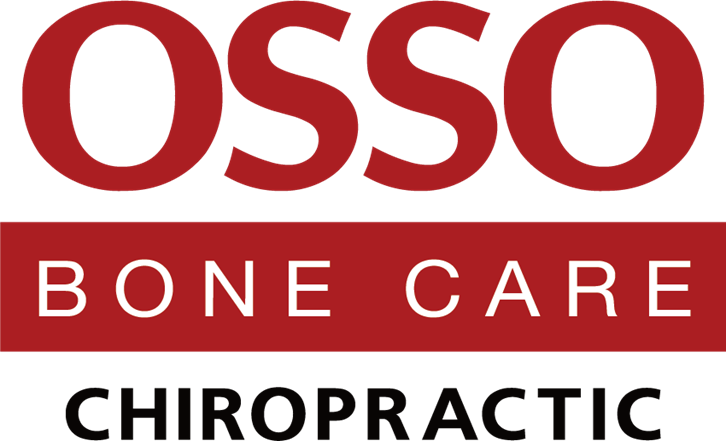Everything You Need to Know about Bulging Discs
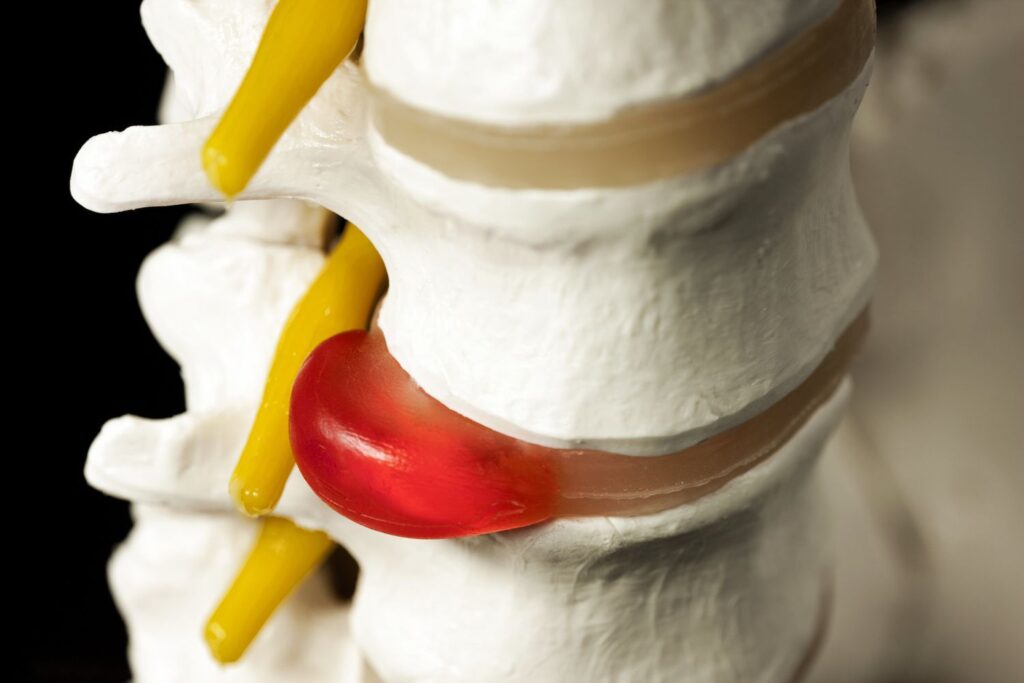
Your spine is made up of bony vertebrae separated by special pads called vertebral discs. These discs act like tiny gel cushions, absorbing shock and allowing some movement between the vertebrae. They also function as ligaments, holding the vertebrae together. There are 23 discs total: 6 in the neck, 12 in the upper/mid-back, and 5 in the lower back.
Any one of these discs can potentially bulge and deteriorate your spine’s health. Disc bulges often develop gradually due to a combination of factors like poor posture, prolonged sitting, improper lifting, sudden twist movement, and direct impact from accidents or sport injuries.
What Does a Disc Bulge Mean?
A bulging disc occurs when the inner portion (nucleus pulposus) bulges through a tear in the outer layer (annulus fibrosis), commonly seen in the lumbar spine. It can lead to nerve compression, causing symptoms like back pain, muscle weakness, and sciatica.
It’s important to note that bulging discs and slipped disc are equivalent. Both terms refer to the same condition at different stages. Various medical terms like bulging disc, herniated disc, ruptured disc, or prolapsed disc also refer to this condition. Should the condition of the disc worsen, it may be more accurate to refer to it with another term like slipped disc.
The takeaway here is— disc bulges can be treatable. Many people receive relief with non-surgical methods like physical therapy, medication, and lifestyle changes. As long as the solution directly addresses the root cause of the bulging, there are effective ways to manage it. Chiropractic techniques have been proven to show improvement, as seen with the positive results our patients experience after their treatment. Osso Bone Care has helped countless patients regain their strength and mobility.
What Triggers a Disc Bulge?
As we age, the discs naturally lose water content, making them less flexible and more susceptible to tears or bulges. This “wear and tear” is a major contributor to disc problems. Aside from age, other factors can trigger a disc to bulge—

- Weight and Strain: Carrying extra weight or putting excessive strain on your spine through improper lifting techniques puts significant pressure on the discs, increasing the risk of bulges.
- Spinal Abnormalities: Certain pre-existing conditions like scoliosis (curvature of the spine) or congenital spinal malformations can put the discs in an uneven position, making them more prone to disc bulges.
- Poor Posture: Sitting or standing with poor posture for extended periods can place uneven stress on the spinal discs, leading to disc bulges. This is especially common in people who spend a lot of time sitting at desks or using computers.
- Smoking: Smoking can reduce blood flow to the discs, depriving them of essential nutrients and accelerating the degenerative process, making them more prone to bulging.
- Trauma and Injury: Sudden impacts or injuries, such as those sustained in car accidents, falls, or sports activities, can cause the discs to bulge or rupture.
- Repetitive Motions: Engaging in repetitive motions that involve bending, twisting, or lifting can gradually wear down the discs and lead to bulging over time.
- Occupational Hazards: Jobs that involve heavy lifting, frequent bending, or prolonged sitting can increase the risk of developing disc bulges due to the constant strain on the spine.
- Developmental Issues: Notochordal persistence, a condition where a fetal structure fails to disappear completely during development, can affect disc formation and increase bulge risk. This condition may not be apparent until much later.
Other many potential causes are more obscure. Schmorl’s nodes (fluid-filled sacs within the vertebrae) and Schuurman’s disease (a degenerative disc condition) may also contribute to disc bulges, although the exact link is still being researched.
Bulging Disc Symptoms and Diagnosis
When experiencing a bulging disc in the neck, you may notice symptoms like neck pain, headaches, and potential weakness and numbness in the arms. On the other hand, a bulging disc in the lower back could manifest as pain in the lower back, hips, and buttocks and potential weakness and numbness in the legs or even traveling to the feet.
Diagnosing a disc bulge in the neck involves various methods such as physical examination, where your healthcare provider will assess your symptoms and medical history. MRI Imaging tests and x-rays may be used to visualize the extent of the bulge and its impact on surrounding structures or shape of the disc and the vertebrae space reduced in an x- ray imaging.
Symptoms Of Disc Bulge In The Neck (C5-C6)
Symptoms of a disc bulge in the neck can manifest as radiating pain, numbness, and weakness in the arms or shoulders. Neck pain is a common symptom, often accompanied by arm tingling due to nerve compression. Muscle weakness may also be present, affecting your ability to perform daily tasks. The radiating symptoms can extend from the neck down to the arms, causing discomfort and limited mobility. When experiencing these signs, seeking medical attention promptly is crucial.
The C5-C6 Vertebrae
The C5-C6 vertebrae of the cervical spine are located in the lower portion of the cervical spine, just above the C7 vertebral body.
Located at the base of the neck, the C5 and C6 vertebrae are crucial for supporting the head and providing neck flexibility. They bear the weight of the head, which can significantly increase with poor posture. When the head juts forward, even by a small amount, the strain on the C5-C6 vertebrae and their surrounding structures can dramatically increase.
C5-C6 disc bulging in the neck can lead to various symptoms, such as nerve root irritation, cervical radiculopathy, and the possibility of a bulging disc getting worse over time. It can also cause effacement of the ventral thecal sac. A severe bulge is associated with thecal sac compression, uncovertebral spurring, and uncinate hypertrophy at C5-C6, which may lead to spinal cord compression, nerve root irritation, and narrowing of the spinal canal (cervical spinal stenosis).
Symptoms Of Disc Bulge In The Lower Back (L4-L5)
Experiencing a disc bulge in your lower back can lead to symptoms that affect your daily activities and overall comfort. In the lumbar region, you may notice signs of nerve compression, such as radiating pain down your leg, known as sciatica symptoms.
A bulging disc also often stems from untreated spinal misalignment. This condition commonly occurs in the lower spine at the L4 and L5 vertebrae, where these segments bear significant weight and provide foundational support for the spine. As misalignment persists, it creates an imbalance in the body’s structure, exerting uneven pressure on spinal discs. Over time, this pressure can force the discs out of their normal position, resulting in disc bulge.
Symptoms Of Disc Bulge In The Lower Back (L4-L5)
The L4-L5 vertebrae are located in the lumbar region of the spine, just above the L5-S1 segment. These vertebrae play a crucial role in supporting the upper body’s weight and facilitating movements such as bending and twisting. Key functions include:
L4-L5 vertebrae bear a significant portion of the body’s weight, especially during activities like standing and walking. They contribute to the spine’s flexibility, allowing for a range of motions necessary for daily activities. These vertebrae house and protect nerve roots that branch out from the spinal cord, supplying sensation and muscle control to the lower body.
Misalignment or poor posture can strain the L4-L5 vertebrae, leading to conditions such as disc bulges or herniations over time. A disc bulge at the L4-L5 level in the lower back can manifest with various symptoms that affect daily activities. Common signs include:
- Lower Back Pain: Pain in the lower back is a hallmark symptom, often localized around the lumbar region.
- Muscle Weakness: Weakness in the legs or feet can occur due to nerve compression, affecting your ability to walk, stand, or lift objects.
- Numbness and Tingling: Sensations of tingling or numbness may be felt in the buttocks, legs, or feet, indicating nerve involvement.
- Difficulty with Movements: Activities such as bending, lifting, or sitting for extended periods may exacerbate symptoms, causing stiffness and pain.
Chiropractic is often recommended to help strengthen the muscles supporting the spine, alleviate pain, and improve flexibility. This approach involves adjusting the misaligned segments back to their proper positions and reducing pressure on the discs. If untreated, symptoms like difficulty walking, standing or sitting for extended periods and loss of bladder or bowel control in severe cases may develop.
Conservative Treatments and Diagnosis for Bulging Discs
Chiropractic care offers spinal adjustments to relieve pressure on the affected disc and promote healing.
At Osso Bone Care, our Chiropractor will advise undergoing a Digital X-ray screening for the Spine + Pelvic screening to rule out and assess the structure, shape, and alignment of the spinal vertebrae. This is crucial for detecting any abnormalities in the spine during the treatment process, accurately identifying the root cause of your bulging disc.
Surprisingly, many who come to us have never undergone an X-ray examination, causing previous practitioners to essentially guessing. Our advanced digital X-ray technology reveals issues that were previously undetectable. With digital X-ray evidence and analysis, the diagnosis provided is thorough and accurate. With our principle, “To see is to know, to not see is to guess,” we ensure precise diagnoses and significantly improve treatment outcomes.
Flexion-Distraction Technique
Utilizing Osso’s very own Osso Flexion Distraction Adjustment Technique ® , chiropractors employ a specialized method for treating herniated discs through gentle spinal stretching to alleviate pressure on the nerve and spinal disc. Repeatedly flexing the spine opens the gap of the disc to increase space between vertebrae, decrease disc pressure, increase opening for the nerves to relieve pinched nerves.
Unlike surgical interventions, the Flexion-Distraction Technique is a non-invasive procedure, making it a favorable option for many seeking conservative care. This technique holds promise in providing relief for individuals suffering from herniated discs.
Spinal Decompression Therapy
Osso 3D Spinal decompression therapy, a chiropractic treatment method utilizing advanced computer-controlled traction system that involves stretching the spine gently to create negative pressure, which helps retract herniated disc material. This negative pressure creates a “suction effect” that draws in disc herniation or disc bulges, effectively taking pressure off the “pinched” nerve.
By reducing nerve compression, improving blood flow, and aiding in the healing process of the affected disc, spinal decompression can provide relief. Chiropractors utilize specialized equipment to perform this technique, customizing the treatment to address individual conditions and symptoms effectively, as it is the best alternative before resorting to a surgery.
Research indicates that spinal decompression therapy can be beneficial in decreasing pain and enhancing function in individuals with herniated discs. This non-invasive approach aligns with chiropractic principles of addressing underlying issues contributing to disc herniation, offering a holistic method to manage and treat the condition.
If you’re experiencing bulging disc symptoms, exploring spinal decompression therapy with a chiropractor could be a valuable option to consider before resorting to a surgery.
Drop Table Technique
The drop table technique in chiropractic treatment involves a specialized table segment that’s strategically raised and then swiftly dropped during adjustments. This method allows for a gentle and controlled adjustment of the spine to target bulging discs and other spinal issues effectively.
Chiropractors use the drop table technique to pinpoint specific adjustment areas of the spine with accuracy, aiding in the correction of spinal alignment. The controlled dropping motion requires less force, making it a comfortable option for patients experiencing bulging disc. Patients often find the drop table technique to be both comfortable and effective in reducing pain and improving spinal alignment.
Chiropractic care offers spinal adjustments to relieve pressure on the affected disc and promote healing.
Preventing Future Disc Issues
To prevent future disc issues, focus on incorporating lifestyle changes and proactive measures that support spinal health and reduce the risk of recurring problems.

Preventive exercises
Engage in regular low-impact exercises like walking, swimming, or yoga to strengthen core muscles and support your spine.
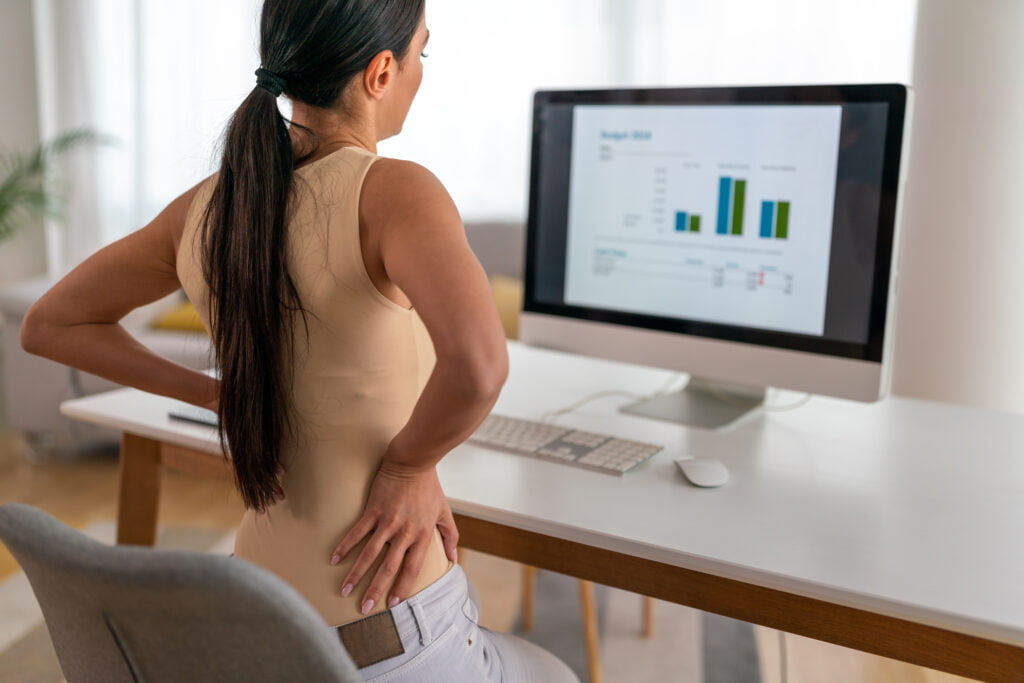
Posture awareness
Practice good posture when sitting, standing, and lifting to reduce strain on your spine and prevent pressure on vertebral discs.
Managing a bulging disc involves a combination of non-surgical treatments, lifestyle changes, and proper supplementation.
By following a comprehensive approach that focuses on reducing inflammation, strengthening muscles, and promoting spinal health, you can effectively alleviate pain and prevent future issues. Stay committed to your recovery journey and prioritize your spinal health for a pain-free future.
Qualifications for Chiropractors in Malaysia
Chiropractors must demonstrate both their educational background and legal qualifications to practice. First, they must have graduated from a chiropractic education program that has received accreditation from The Councils on Chiropractic Education International (CCEI) for at least four years. This ensures they have received a high standard of training recognized by a global chiropractic authority.
In addition to their education, chiropractors must also be licensed to practice in their country. In Malaysia, this means being registered with the Malaysian Traditional and Complementary Medicine Council (T&CM), Ministry of Health Malaysia.
Registration with the Association of Chiropractic Malaysia (ACM), ensures that qualified centers can be reviewed and businesses. By meeting these stringent qualifications and standards, chiropractors in Malaysia are equipped with the necessary knowledge and skills to provide effective and professional care for individuals seeking treatment for spinal disc pain related conditions like herniated discs.
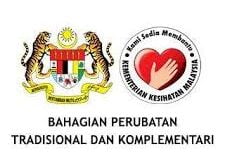
Certified Registered Chiropractors with Traditional & Complementary Medicine (T&CM), Ministry of Health Malaysia
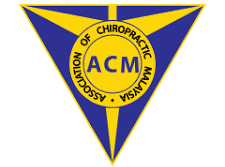
Certified Registered Chiropractors with Association of Chiropractic Malaysia (ACM)
Osso Bone Care Chiropractors are certified and qualified to provide you with the best chiropractic services for slipped disc and herniated disc patients.
One of The Best Chiropractic Centers in Malaysia
Advancing as pioneers in the field since 2007, we are the first chiropractic center in Malaysia to offer integrated digital x-ray services, streamlining your chiropractic care under one roof. Many patients have found success and results with Osso Bone Care due to our unique, signature treatments and by showing evidence of the spinal condition with our Digital X-Ray screening, which accurately diagnose the root cause of the spinal conditions.
Why Would You Want to Go to a Different Place if OSSO Bone Care Chiropractic® has All That You Need?
frequently asked questions
FAQ on Bulging Discs
A proper diagnosis is essential to determine if you have a bulging disc or another spinal issue. A chiropractor or healthcare professional can conduct a thorough examination, including physical assessments and imaging tests like X-rays or MRIs, to identify the exact cause of your symptoms.
Making lifestyle changes can significantly help manage a bulging disc. Maintaining a healthy weight, practicing good posture, staying active with low-impact exercises, and avoiding activities that strain the spine are essential. Incorporating stress management techniques and ensuring proper ergonomics at work and home can also aid in managing symptoms.
No, surgery is not the only option for severe bulging disc cases. Non-surgical treatments like chiropractic care, physical therapy, and pain management techniques can be effective. Surgery is typically considered a last resort when other treatments have failed to provide relief.
Yes, chiropractic care can be effective for treating a bulging disc. Chiropractors use non-invasive techniques to adjust the spine, relieving pressure on the affected disc and promoting natural healing. Regular chiropractic visits can also help prevent future disc problems by maintaining proper spinal alignment.
